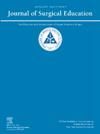Feedback Perceived by General Surgery Residents: What is the Influence of Program Characteristics?
IF 2.6
3区 医学
Q1 EDUCATION, SCIENTIFIC DISCIPLINES
引用次数: 0
Abstract
Background
Studies investigating residents’ perceptions of feedback received are sparse. We explored general surgery residents’ (GSR) perceptions of feedback based on program characteristics, such as region, size, and type in a national sample.
Methods
An optional survey following the American Board of Surgery In-Training Exam (ABSITE) was administered in January 2023 querying feedback quality, amount, and timeliness on GSRs’ self-identified best and worst rotations, overall feedback satisfaction, and frequency of feedback. Program characteristics included geographic location, program type, and size grouped into quartiles(Q). Bivariate and multivariable analyses were performed with Chi-square, Kruskal-Wallis, and ordinal regression, as appropriate.
Results
Responses from 9854 individuals representing 348 programs were received. Most respondents (n = 3259) and programs (n = 110) were from the Northeast (NE). While most respondents trained at University-based programs (n = 4961), most programs were University-affiliated (n = 130). Mean overall feedback satisfaction decreased as program size increased (7.4, 7.3, 7.2, and 6.9 in Q1-4, respectively). On ordinal regression, residents from Q4 had 0.7x lower odds of overall satisfaction compared to Q1 (p < 0.05). Residents from University-affiliated, Independent academic centers, and those from Southeast, had 1.2x higher odds of overall feedback satisfaction compared to University-based and Northeast (p < 0.05). Multivariable analysis of best rotation feedback showed 1.3-1.5x higher odds of satisfaction in regions outside the Northeast (NE) (p < 0.05 for all). Residents from the largest programs (Q4) had 0.8x lower odds of satisfaction compared to those from the smallest (Q1). Multivariable analysis of intra-operative feedback showed Midwest residents and those in Q3 and Q4 had 0.8, 0.8, and 0.7x lower odds of reporting positive feedback, respectively, compared to reference (p < 0.05 for all).
Conclusion
Program characteristics like location, type, and size affect feedback satisfaction, but no consistent trends were found in their interactions. This can guide program leaders in raising awareness and advocating for feedback improvements, with further research needed to understand underlying factors.
普外科住院医师的反馈感受:项目特点的影响是什么?
调查居民对收到的反馈看法的研究很少。我们在全国样本中探讨了普外科住院医师(GSR)对基于项目特征(如地区、规模和类型)的反馈的感知。方法在美国外科培训委员会考试(ABSITE)后,于2023年1月进行一项可选调查,查询GSRs自我认定的最佳和最差轮转的反馈质量、数量和及时性、总体反馈满意度和反馈频率。项目特征包括地理位置、项目类型和分组为四分位数(Q)的规模。采用卡方、Kruskal-Wallis和有序回归进行双变量和多变量分析。结果共收到来自348个项目9854名个人的反馈。大部分受访者(n = 3259)和项目(n = 110)来自东北(NE)。虽然大多数受访者接受的是大学课程( = 4961),但大多数课程是大学附属课程( = 130)。平均总体反馈满意度随着项目规模的增加而下降(Q1-4季度分别为7.4、7.3、7.2和6.9)。在有序回归中,第四季度居民的总体满意度比第一季度低0.7倍(p <;0.05)。来自大学附属、独立学术中心的居民,以及来自东南地区的居民,总体反馈满意度的几率比大学和东北地区的居民高1.2倍(p <;0.05)。最佳轮转反馈的多变量分析显示,东北(NE)以外地区的满意度高出1.3-1.5倍(p <;0.05)。来自最大项目(第四季度)的居民满意度比来自最小项目(第一季度)的居民满意度低0.8倍。术中反馈的多变量分析显示,中西部地区居民和Q3、Q4患者报告积极反馈的几率分别比参考文献低0.8、0.8、0.7倍(p <;0.05)。结论项目地点、类型、规模等特征对反馈满意度有影响,但其相互作用趋势不一致。这可以引导项目领导者提高意识并倡导反馈改进,需要进一步的研究来了解潜在的因素。
本文章由计算机程序翻译,如有差异,请以英文原文为准。
求助全文
约1分钟内获得全文
求助全文
来源期刊

Journal of Surgical Education
EDUCATION, SCIENTIFIC DISCIPLINES-SURGERY
CiteScore
5.60
自引率
10.30%
发文量
261
审稿时长
48 days
期刊介绍:
The Journal of Surgical Education (JSE) is dedicated to advancing the field of surgical education through original research. The journal publishes research articles in all surgical disciplines on topics relative to the education of surgical students, residents, and fellows, as well as practicing surgeons. Our readers look to JSE for timely, innovative research findings from the international surgical education community. As the official journal of the Association of Program Directors in Surgery (APDS), JSE publishes the proceedings of the annual APDS meeting held during Surgery Education Week.
 求助内容:
求助内容: 应助结果提醒方式:
应助结果提醒方式:


